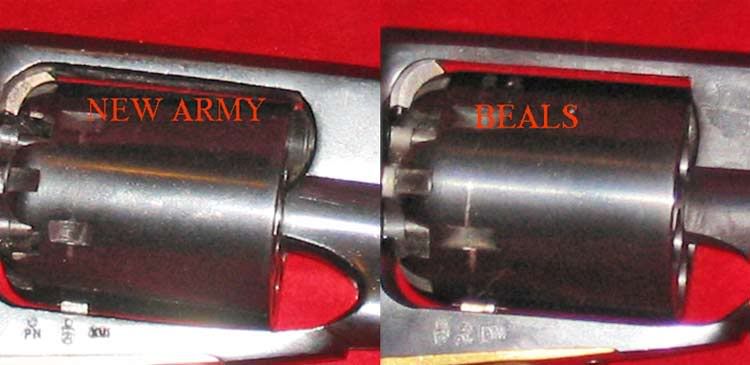Like Richard and rodwha suggest, use a larger diameter ball to get the best accuracy.
When the larger ball shears off lead as it enters the cylinder chamber, it leaves a flat (cylindrical) area which will engage the rifling in the barrel.
The longer this band is, the more lead will engage the rifling.
If your into playing with numbers and you want to calculate the length of this cylindrical driving band you just have to know the size of the unloaded ball and the size of the cylinders chambers.
This chamber size will depend on what company made the gun. For instance, Dixie Gunworks says the chambers in a Uberti .44 Remington are .450" in diameter.
Dixie also says one of the Pietta .44 Remingtons they sell has chambers that are .447" in diameter.
To calculate the width (length) of the cylindrical section on the ball, get your calculator out.
Enter the chamber diameter (I'll call it C for chamber below) and square it by multiplying it times itself. Store the answer in the calculators memory or write it out on a piece of paper.
Enter the ball diameter (I'll call it B for ball below) and square it by multiplying it times itself.
Now, recall the stored square of the chamber diameter and subtract it from the square of the ball diameter.
Poke the square root button on the calculator.
The results is the length of the cylindrical area on the ball.
What you did can be written with the formula √ B²-C² = length
Going thru this using the .447 Pietta chamber size and a .451 diameter ball I get:
√.451²-.447² = .0599 or, just under 1/16"
Doing this with the .454 diameter ball I get:
√.454²-.447² = .0794 or, just about 5/64".
That extra length is about 30% more than the smaller balls cylindrical length.
About the only negative about using the larger ball is, it is a little harder to ram into the chamber mouth.

